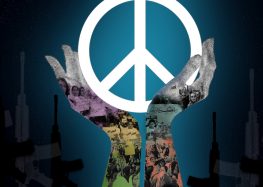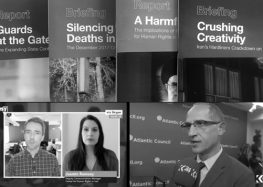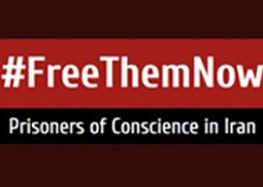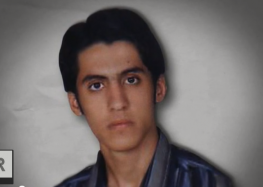Background
After three decades, the Islamic Republic of Iran’s human rights record has generated notable concern amongst United Nations human rights bodies, international NGOs, foreign governments including Iran’s diplomatic partners, and a broad spectrum of Iranian civil society.1 Since the 2005 presidential election of Mahmoud Ahmadinejad, the government’s human rights record has further deteriorated.2
During Ahmadinejad’s tenure, Iranian society has increasingly come under the brutal grip of the Revolutionary Guard Corps and the government’s security agencies, most prominently the Ministry of Intelligence, which have inserted themselves into increasing sectors of government and public life.3 In this context, security authorities have exerted greater control over university enrollment and the university admissions process, including barring individuals from higher education as a means of targeting political activists and critics.
Furthermore, since the 1979 Revolution, the Iranian government has subjected members of the Baha’i Faith to various forms of religious discrimination including barring or expelling them from universities.4
Higher education in Iran is divided between government and non-governmental (i.e. private) universities called Azad universities.5 Students at government universities attend for free, while Azad students must pay tuition.6 In 2010, there were 3.8 million students enrolled in Iranian universities: 27 percent in associate programs, 64 percent in bachelors programs, and 10 percent in graduate programs.7 Of these enrolled students, roughly half are women and half men.8 Approximately 62 percent of students are enrolled in government universities, while 38 percent are in Azad universities.9 Forty-four percent of students study humanities and social sciences disciplines, thirty-three percent pursue technical and engineering degrees, and seven percent study natural sciences. Another six percent study agriculture and veterinary science, while five percent are in arts programs.10
Traditionally, Iranian university students constitute a highly active part society, often playing prominent roles in social movements, including the 1979 Revolution. Student activism is also an important part of campus life in Iran. Students form campus groups, organize forums on social and political topics, and are often involved in university issues such as academic freedom and dormitory conditions. University rules and regulations permit such activities, but sometimes include vague standards for impermissible activity, such as prohibitions on insulting Islamic and national beliefs or acting against the Islamic Republic. These exceptions have been used to target students critical of government and university policies.11
Generally, young Iranians are a significant segment of the population. Two-thirds of Iranians are under the age of 30 and Iran boasts one of the world’s highest per capita rates of bloggers, most of whom have come of age after the Revolution.12
The International Campaign for Human Rights in Iran interviewed 27 students barred from higher education, including 19 student activists and 8 Baha’is. The Campaign also compiled a list of 217 students barred from higher education. The true numbers are believed to be much higher, as many targeted students have preferred to remain silent and not make their cases public, fearing further persecution and prosecution, or hoping that they might reverse their education bans by giving written guarantees to cease future activism. The majority of students who spoke to the Campaign, or whose cases were compiled for this report, qualified for government universities and were subsequently barred. However, some students also reported being barred from Azad universities.
Student activists told the Campaign that they were involved in various forms of activism critical of government and university policies including working on campus publications, organizing forums or protests, and membership in the Daftar Tahkim-e Vahdat Student Union and other campus organizations. These students were involved in women’s rights, defending academic freedom, political dissent, human rights and the rights of political prisoners. Students included in the larger list of 217 barred students were also involved in the promotion of minority and ethnic rights.
Baha’is were barred or expelled from universes once education officials learned of their religion. Baha’is often report that, as an article of their faith, they do not deny their religion.13 Up until 2006, university applications required prospective students to state their religion. Many Baha’is note their faith on university applications while some leave it blank. Baha’is, before and after 2006, reported their applications being flagged as “incomplete” and sought corrections when government agencies wrote Islam as their religion on university or entrance exam transcripts.14
The Ministry of Science, Research, and Technology is the government body charged with overseeing higher education in Iran and responsible for administering university entrance exams through its academic measurement bureau the Sanjesh Organization. The Ministry oversees university admissions through the Central Selection Committee and has a full mandate over government universities and admissions.15 Since 2005 though, President Ahmadinejad’s cabinet has made greater efforts to exert more control over Azad universities.16
Iranians who want to attend an undergraduate or graduate program at a government university must take an entrance exam administered annually by the Sanjesh Organization. Typically, applicants are rejected or accepted based on the score they receive on the entrance exam. However, regulations issued by the Supreme Council of the Cultural Revolution specifically require the Ministry to gain approval for student admissions from non-academic government organs, including the Ministry of Intelligence and the Prosecutor of the General and Revolutionary Courts.17 These agencies can block, or make conditional, applicants’ admission irrespective of their performance on standardized examinations or academic merits.
Under these regulations, authorities can reject applicants if they are deemed “enemies” of the Islamic Republic. While the regulations make clear that “dissidents” are different than “enemies,” since at least 2006, the Central Selection Committee and the Ministry of Intelligence have barred numerous applicants based on a broader set of criteria, namely campus or political activism.18 Authorities can also reject students if they are not from an official or recognized religion (i.e. Islam, Christianity, Judaism or Zoroastrianism), resulting primarily in the expulsion of members of the Baha’i Faith.19
This system of exclusion has come to be known as “starring,” and those barred are known as “starred students,” because of the Ministry of Science’s practice in 2005 and 2006 of marking the exam results of student activists and Baha’is with one to three “stars.” These stars refer to several categories of restrictions. In some cases, authorities have refused to release the results of applicants’ test scores altogether. In other cases students could gain admission after signing a letter promising to cease their activism. Some students told the Campaign that after gaining admission they were expelled on the basis of decisions by university Disciplinary Committees, or were subjected to de facto expulsions through repeated suspensions.
Effectively, depriving students from higher education became a method of punishing dissent and a systematic campaign of targeting those critical of authorities. Information on students from university officials, the Judiciary, security agencies, and others acting at their behest is the basis for decisions to deny higher education or require written promises to end undesirable behaviors as a condition for study. These decisions are a form of extrajudicial or arbitrary punishment, having minimal legal legitimacy or basis in broad regulations. There is little transparency in the screening process, and no formal mechanism for appeal (with the exception of appeals to university Disciplinary Committees for expulsion decisions).
Simultaneously, discrimination in the admissions process and the expulsions of Baha’i students, for which there is no appeals mechanism, constituted part of a broader scheme of religious discrimination.
Most students interviewed by the Campaign sought recourse and redress for their denial of education from officials with the Ministry of Science, their universities, courts, members of Parliament, the President and Iran’s Supreme leader. They also hoped that appealing to the media and participating in protests would pressure authorities to respond. In some cases individual students regained their places in universities, but some students, including most interviewed by the Campaign, are still barred.
This report documents the systematic and discriminatory exclusion of Iranian students from higher education based on their political and religious views. It includes personal testimonies of university students barred or expelled from education by authorities, documents the historical roots of starring as a policy, outlines the regulatory and administrative framework used to exclude targeted students, and details the contradictions between these practices and Iran’s obligations under international human rights law.
————————————————————




